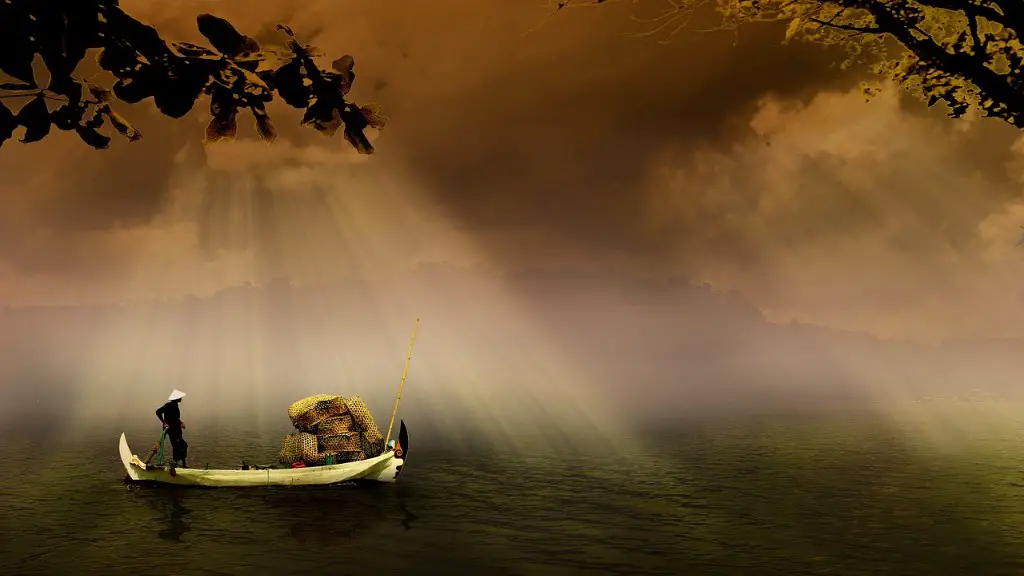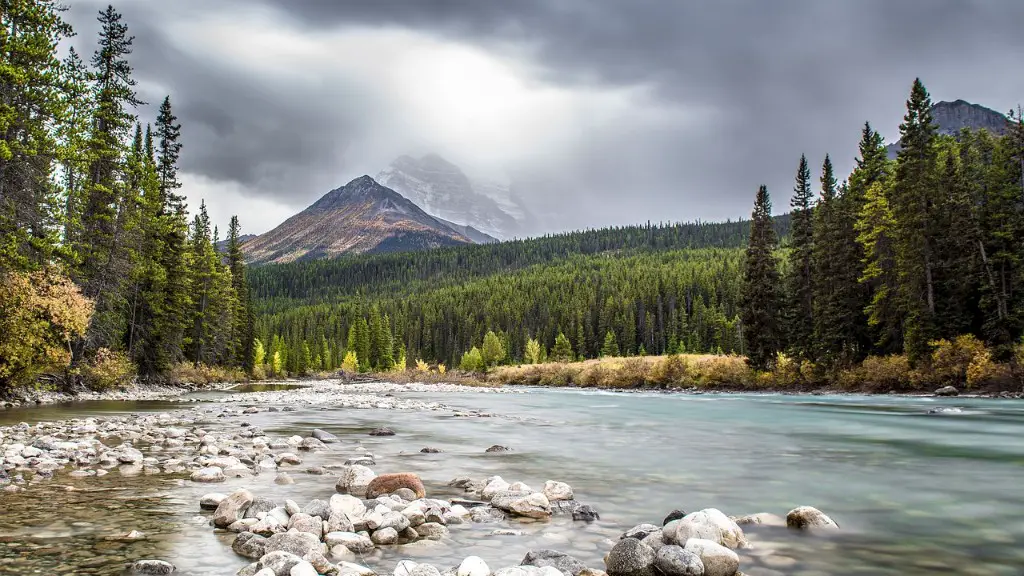The Yangtze River is a major river in East Asia, running through most of the eastern, central and southern parts of China, as well as deep into Tibet. It is the longest river in Asia and the third-longest in the world, with a length of 6,300 kilometers (3,900 miles), and is one of the world’s most important rivers.
The source of the Yangtze River has been disputed for centuries. Many geographers, historians, and philosophers have proposed different locations for the source. The consensus among most experts is that the source of the Yangtze River is located in the Tanggula Mountains, which are part of the Qinghai-Tibet Plateau.
The Tanggula Mountains are vast and remote, so finding the precise source point has been challenging. The Tanggula Mountains are actually a chain of parallel peaks at an altitude of about 5,000 meters (16,400 feet). At the base of the mountains is a small lake, called the Zhigong Tan. This lake is the starting point of two streams – the Dangqu and the Baishui. These two streams flow north and join to form the Yangtze River.
From its source in the Tanggula Mountains, the Yangtze River flows east into the Tibetan Plateau, then south through the Sichuan Basin, the Hubei Province, and into the East China Sea. Along its journey, the Yangtze River passes through over 30 prefectures, cities, and autonomous regions, making it an important waterway for transportation and commerce.
In its early history, the Yangtze River was a crucial part of many ancient Chinese civilizations. Even today, the Yangtze River continues to be one of the most important rivers in China. It provides water for drinking, irrigation, and industrial use. It is also a major source of hydroelectric power. The Yangtze River basin is home to over 400 million people, making it one of the most densely populated regions in the world.
The Yangtze River has an important role in Chinese culture and is renowned for its beauty. It has been immortalized in literature and art, and is a major destination for tourists. Despite its beauty and cultural importance, the Yangtze River faces many environmental challenges. Pollution caused by industrial and agricultural activities have caused the river’s water quality to decline and have damaged the river’s ecosystem.
Environmental Challenges
The Yangtze River and its tributaries have become increasingly polluted due to rapid economic development and population growth in the region. The government has made efforts to reduce water pollution, such as introducing environmental regulations, providing economic incentives, and raising public awareness.
These efforts have had some success in reducing the amount of pollutants in the river, but the river remains polluted. There is also significant soil erosion caused by deforestation and urbanization. The Yangtze River’s high sediment load has caused numerous problems, such as flooding and siltation of ports.
The Three Gorges Dam, built in the mid-1990s, was intended to help mitigate the flooding and siltation problems, but it has come under criticism for its environmental impacts. The dam has caused water shortages and has threatened native fish species. The impact of thedam on river ecology is still being studied.
Additionally, climate change has affected the Yangtze River in a variety of ways. It is estimated that an average of 40 billion tons of water is lost to evaporation each year due to climate change. This has caused the river level to drop, threatening water security.
The warming climate is also having an impact on fish populations, which are essential for local livelihoods. Moreover, the loss of glaciers on the Tibetan Plateau has reduced the river’s water supply during the dry season.
Infrastructure Initiatives
To help address the challenges facing the Yangtze River, the Chinese government has launched a number of infrastructure initiatives. These projects include the construction of the Three Gorges Dam and the South-to-North Water Diversion project.
The Three Gorges Dam is the world’s largest hydroelectric power station. The dam is part of a major infrastructure project that aims to improve navigation on the river and generate electricity. The South-to-North Water Diversion project is designed to move water from the south of the Yangtze River Basin to the north of the Basin to address water shortages. It is estimated that this project could provide up to 44 billion cubic meters of water per year.
The Chinese government has also implemented other measures to improve water conservation and reduce pollution. These include stricter regulations on industrial wastewater, stricter water diversion quotas, and increased funding for environmental protection.
The Yangtze River plays an important role in Chinese history, culture and economy. As China’s population and economy continue to grow, so do the challenges facing the river ecosystem. The Chinese government has implemented a number of infrastructure and environmental initiatives to protect the Yangtze River, but more needs to be done to ensure its well-being.
Fluvial Geomorphology
The Yangtze River is an important river in terms of fluvial geomorphology and river engineering. The river has a complex network of tributaries and varies considerably in depth. The upper reaches of the river are shallow and narrow, whereas the lower reaches are deep and wide. The steep gradient of the upper reaches of the river quickly transitions to a shallow and wide lower reaches.
This unique geographical feature has posed significant challenges for river engineering, including the implementation of infrastructure such as dams and reservoirs. Rivers engineers must consider the varying features of the Yangtze River when planning these structures. They must also take into account the impact on the river’s ecosystem, as any major changes could have significant implications for downstream communities.
The Yangtze River has been studied extensively by researchers over the years who have sought to understand its unique features. The river’s complexity has made it a challenging one to study, but advancing technology has made it possible to do so with greater accuracy. This, in turn, has helped create better management plans for the river and its tributaries.
Economy and Tourism
The Yangtze River is an important source of economic, social and cultural benefits. The river and its tributaries provide water for drinking, irrigation, and industry, while the floodplain and wetlands are important sources of fish and other food sources. The river is an important transportation link and is also home to many ports and cities.
The Yangtze River is also a major tourist destination. There are numerous historic sites, as well as natural beauty spots along the river, such as the spectacular Three Gorges. Tourists from all over the world visit the Yangtze River and its surrounding areas to experience its natural beauty and cultural significance.
River cruises are a popular tourist activity, as are whitewater rafting and kayaking. There are also many cultural activities that take place on the river, such as traditional dancing and fireworks displays.
Population and Social Impacts
The Yangtze River and its tributaries are home to over 400 million people. This makes it one of the most densely populated areas in the world. Consequently, the river’s ecosystem has been significantly altered by human activities, such as deforestation, industrial pollution, and overfishing.
The Yangtze River plays an important economic, social and cultural role in the lives of the people who live along its banks. Fishing is an important source of livelihood, while the river and its floodplains are important sources of food and fuel. The river is also an important source of hydroelectric power, which is essential for the region’s development.
The population living along the Yangtze River is diverse. It includes Han Chinese, Tibetans, and other ethnic minorities. Each group has their own culture and language, and many of their livelihoods are closely dependent on the river.
Unfortunately, the population living along the Yangtze River’s banks is at risk due to the river’s declining water quality. The water pollution has caused a variety of problems, from decreased fish populations to water-borne diseases. The Chinese government has taken steps to reduce water pollution, but more needs to be done to ensure the well-being of the people who depend on the river.
Conclusion
The Yangtze River is one of the world’s most important rivers. It is an integral part of Chinese culture and economy, and home to over 400 million people. Despite its immense importance, the Yangtze River is facing a number of environmental challenges, from pollution to climate change. In recent years, the Chinese government has implemented a number of infrastructure and environmental initiatives to improve water conservation and reduce pollution, but more needs to be done to ensure the river’s well-being.





